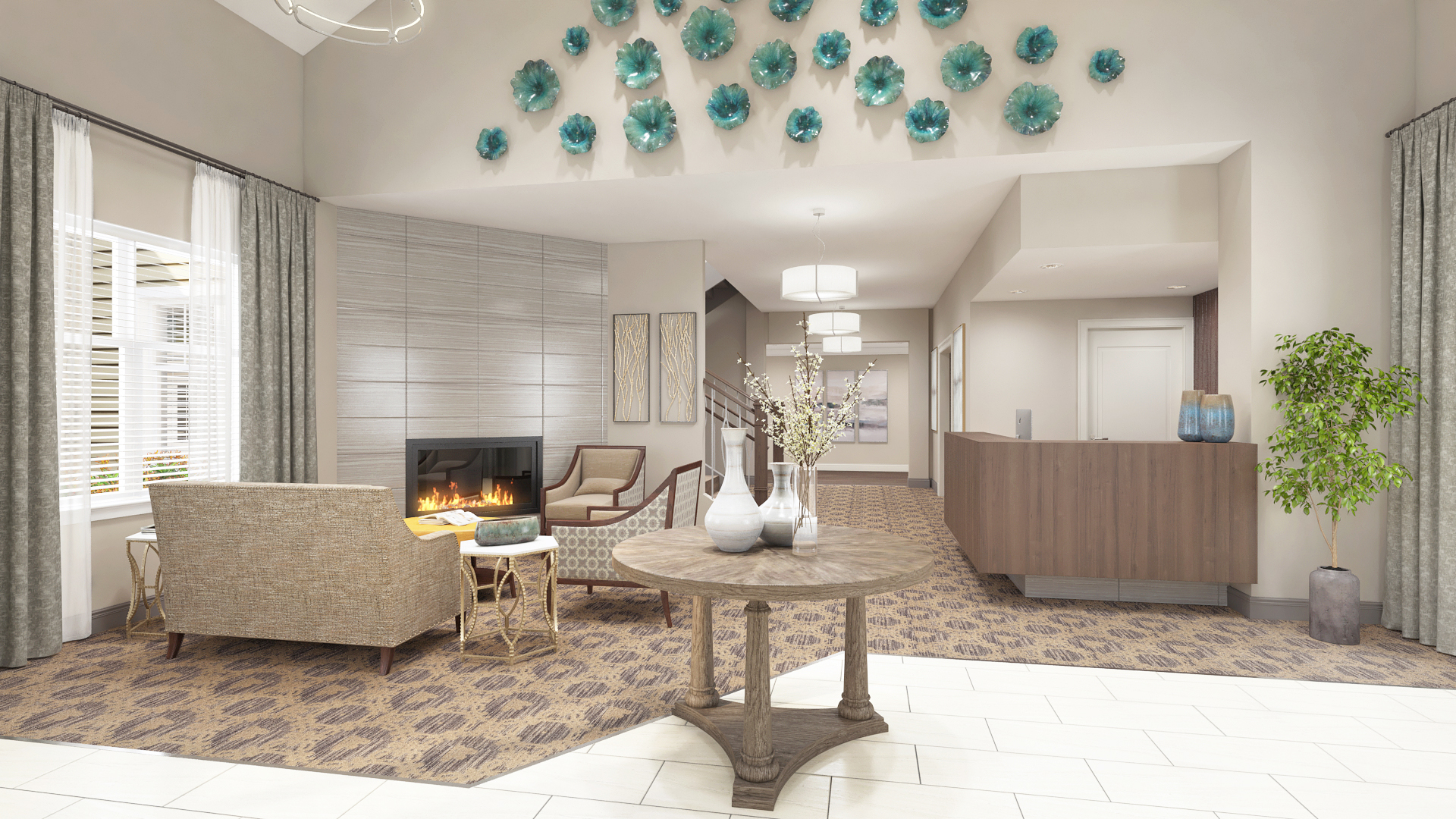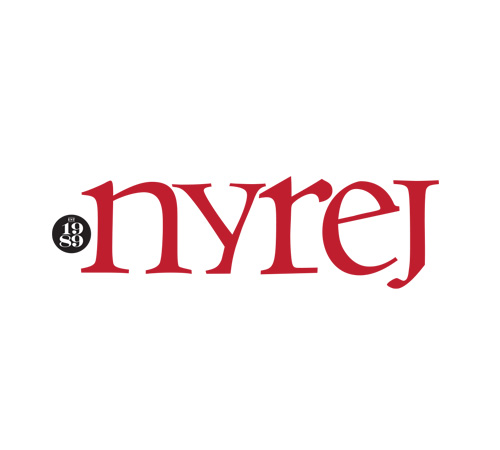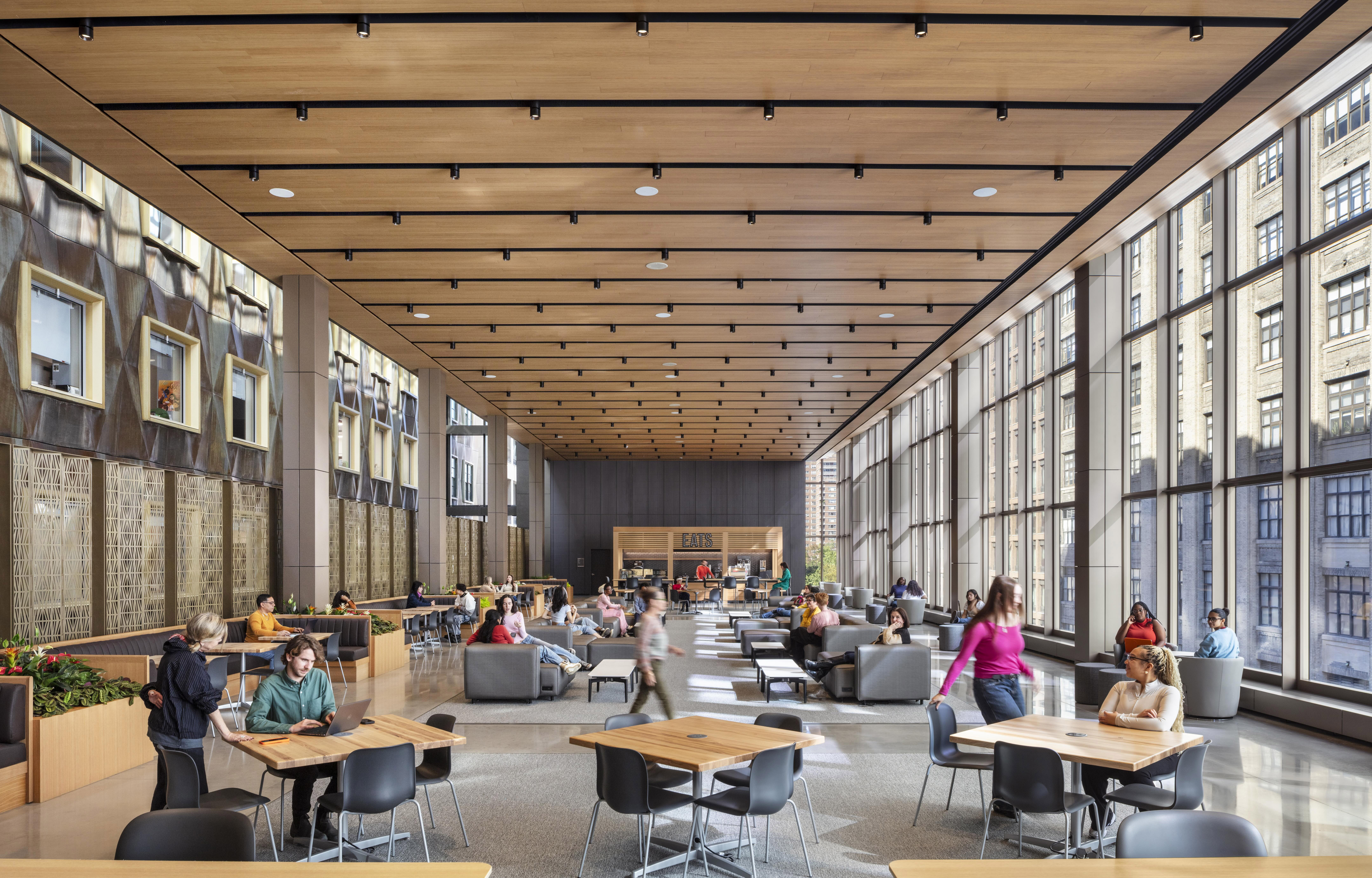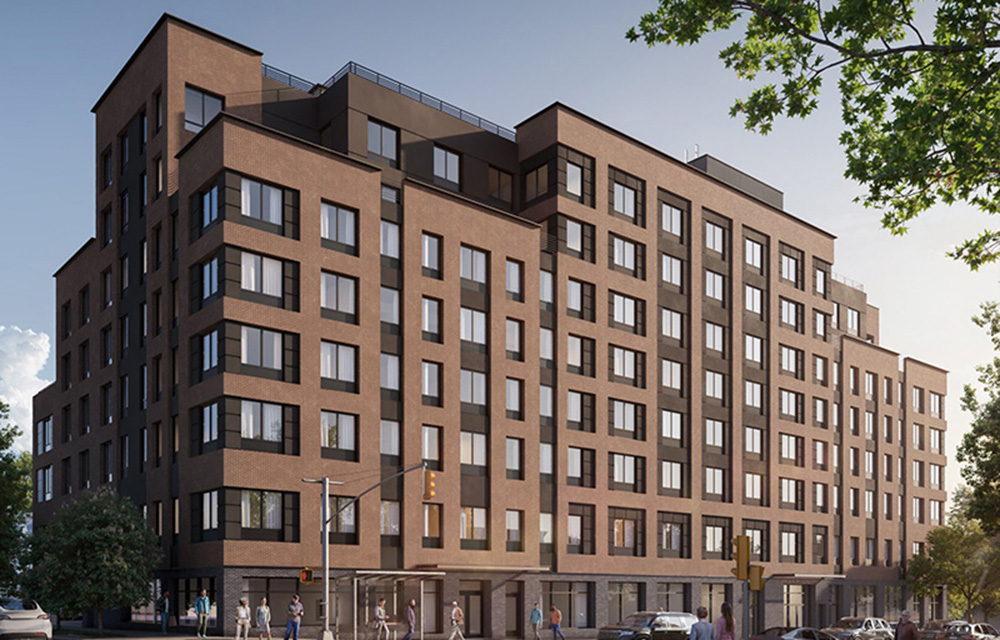FilBen Group, RSF Partners, McAlpine Contracting, and H2M Architects + Engineers break ground on $54 million assisted living facility

Montebello, NY Owner/developers FilBen Group and RSF Partners, general contractor McAlpine Contracting, and designer H2M Architects + Engineers broke ground for Braemar at Montebello, a new 200-resident, 133,675 s/f, four-level luxury assisted living residence located on 6.2 acres in Lower Hudson Valley acres at 250 Lafayette Ave. The property is close to Harriman State Park in Rockland County.
The parcel is adjacent to the commercial center, which will offer Braemar’s residents access to retail, entertainment, dining, and medical services. The Braemar property also neighbors the Good Samaritan Hospital, a part of Bon Secours Charity Health System.
Braemar is a brand of FilBen-owned and operated senior living communities. The Montebello community will be the third Braemar-branded residence when it opens in 2024. FilBen plans to begin construction of its fourth property, a 152-bed assisted living community in Carmel, NY, in early 2023.
The total development cost of the project is $54 million, including $36 million in construction cost. The owner/developer is a partnership between FilBen Group and RSF Partners, a private equity firm based in Dallas, TX. M&T Bank provided a $34.8 million construction loan.
Additional team members include site engineer Booker Engineering, landscape designer Robert Torgersen, LA; mechanical/electrical/plumbing (MEP) engineer Fellenzer Engineering LLP; and structural engineer Mulhern+Kulp Residential Structural Engineering.
“We expect senior residents of Rockland County, the Lower Hudson Valley, as well as the greater New York area and northern New Jersey, to be drawn to the active lifestyle that this community will offer,” said Jessica Cotellese, manager of development for FilBen Group.
“This $54 million project will add a beautiful, high quality senior care residence for the Montebello and Rockland County communities,” said McAlpine VP John Nolan. “Because of the location of the future building on a sloping site, which will offer breathtaking views to the residents, the project presents several technical and logistical challenges to the construction and design team. For example, construction of foundations and the structural system will proceed in a phased, staggered manner to accelerate the schedule, while addressing access and site engineering complexities,” he said.
The Montebello site is long, narrow, and sloped, which created design challenges as well. “The building footprint is elongated and fairly shallow to match the property configuration,” shared Mark McKee, AIA, H2M senior architect. “Large areas of glazing will draw natural light into all of the interiors and will offer grander views than are typical available in other senior residences.” H2M designed the Braemer Wallkill property and is working with FilBen on the design of the Carmel development.
“The property slopes significantly from a high point at the south toward a low point at the north, and the linear building plan will be placed perpendicular to the line of the slope, with three levels above grade to the south and an additional lower level above grade to the north,” said Nolan. The building plan will have a central section and two symmetrical wings that will bend from that section toward the north. A port cochere and circular vehicular drop off will be centered in the south façade on the main level, on grade with the main parking lot to the south and a staff parking lot and service entrance to the east. Active outdoor resident areas will be located at both the north and south building facades, while hiking paths will span the grounds.
Victorian-era buildings in the surrounding area provided the design inspiration for the building façade. Simulated wood look horizontal beveled siding in a neutral palette will be combined with stone veneers at the main level facing the outdoor patios and on the upper levels above the entrance. Columns with stone veneer bases will support the pitched roof of the porte-cochère. Windows will be in a traditional double-hung style. The roof will feature pitched mansard sections on the perimeter and reverse gables with decorative trim to invoke a Victorian aesthetic.
Proactive construction modifications will expedite project schedule and reduce costs
McAlpine has developed a phased process of excavation, starting at the east and moving west, in order to accelerate the project. A poured concrete foundation will support exterior load bearing concrete masonry unit (CMU) walls, concrete plank floors and roof, and light gauge metal stud interior walls. The slope will need to be excavated in order to place the structure. “The first section will be excavated, and foundations will be poured. As the structure above that foundation section is installed, excavation will continue on the next section, and the process will be repeated down the length of the building footprint,” said Alan Hajtler, executive oversight at McAlpine. By applying this logistical solution, McAlpine expects to shorten project completion by four weeks.
“Several façade and structural systems were considered for the project. The McAlpine team worked with H2M to select the most economical solution that would also be impervious to supply chain delays. The joined teams selected bearing concrete masonry unit (CMU) walls and concrete plank floors to meet the budget and to expedite the construction schedule,” said McAlpine project manager Vitrag Shah.
Interior spaces are designed for interactive community living

The building will feature shared public spaces on the main, second, and third levels. A total of 143 residential units 54 private, one-person studio units of approximately 400 s/f each and 57 two-bedroom semi-private “Friendship” units of approximately 600- s/f each – will be located on these levels, while additional 12 private and 10 Friendship units will be located on the lower level in a memory care section. All kitchenettes and bathrooms are barrier-free and include roll-in showers.
The visitor entrance on the main level will lead from the south parking lot into a two-story, 22-foot high cathedral-ceilinged atrium with a stone and wood reception desk, a tiled fireplace, and comfortable seating. Behind the desk, a feature wall in a curved wood pattern will evoke the Braemar logo. A corridor will lead past the grand stair to the main double loaded corridor that bisects the floor. Two passenger elevators, one service elevator, and two additional stairs will provide vertical access and emergency egress to all levels.
Administrative offices will be located adjacent to the reception area, but the majority of the remaining spaces in the central section and east wing of the main level will be occupied by common spaces. The primary public space is the 3,500 s/f main dining room that extends out from the north façade to offer 180-degree views of the surrounding vistas. A private dining room will also be available for celebrations and private dinners.
Along the south façade, a 1,200 s/f pub and game room will offer lounge seating, game tables, a fireplace, televisions, and direct access to a billiard room. The pub will open onto the south terrace, where residents will be able to enjoy outdoor seating surrounded by a pergola, gazebo, and raised planting beds; stroll along walking paths; and even play a game of giant chess. The fitness center will be located adjacent to the wellness center, which will be equipped with a waiting area, exam room, medication room, offices for the director and staff, and a records storage room.
The east wing will also include a commercial kitchen and food preparation area that services the entire property, as well as a receiving area for deliveries, a service lobby, and a staff lounge.
On the second level, common areas will include a 940 s/f parlor that will open onto a 1,000 s/f outdoor terrace with a pedestal paver system, decorative planters and comfortable seating for enjoying the views. The parlor will share a double-sided fireplace with the adjacent 510-square foot library. A 1,080 s/f cinema and a chapel will complete the public spaces. The floor will contain 22 private rooms and 24 Friendship rooms for a total of 70 beds.
A large number of common spaces were included in the design to encourage social interaction and provide multiple options for entertainment and engagement. The private dining room, family room and kid’s room will allow residents to include their families in their lifestyle. Lectures and other special events, some of which will be open to outside attendees, will connect Braemar residents to the neighboring community.
The third level floor plan is similar to the second, with a lounge and shared laundry room as well as 24 private rooms and 28 Friendship rooms for a total of 80 beds.
A portion of the lower terrace level will house the memory care unit. This level will offer views to the natural landscape down the slope and beyond the property, with full exposure to natural light that will permeate the building interior. The level will contain 12 private units and 20 Friendship, two-bedroom units for a total of 33 beds. A dining and activity room will be centered in the footprint directly under the main level dining room above and will be wrapped with glass to provide similar views. Two lounges – one with an exit to the north terrace, the other a quiet space – will provide additional social interaction. A circular staff desk with an integral medication room will provide oversight of the dining room and corridors. An exam room and therapy room complete the unit. The exterior terrace will be provided with comfortable lounge and dining furniture and will be protected by secure fencing.
Maintenance and staff areas, separated from the residential units by dedicated service corridors, will occupy the north side of the lower level. These spaces include men’s and women’s locker rooms, laundry center, housekeeping storage, and medical waste room. Mechanical equipment rooms, maintenance shop, and server room area also located in this area.
Interior design mirrors the surrounding landscape
H2M designed the interiors in close collaboration with Cotellese, who has an interior design background. Cotellese said, “The interior design inspiration came from the environment, including the water and proximity to the Hudson River and lush greenery of the various local state parks.” The intent is to create a visual landscape connecting all the elements - the environment, community, and the residents. The wall finishes and flooring in the common areas will include wood-look LVT, commercial grade carpeting, sheet vinyl, wallcovering, and a palette of nature-inspired colors. There will be accents of ceramic tile, and reclaimed wood fireplace mantels.
“The materials will provide a soft visual background to layer upon with organic and geometric patterns. This will be seen in the decorative architectural elements, including focal walls and wood screening to furnishings, fabrics, and artwork. The patterns will mimic what one sees in the local landscape, such as river stones, the ripple of water, or a view through the trees,” said Cotellese. Saturated pops of greens, blues, oranges, and purples will provide accents and offset the neutral paint tones and natural materials. The common area spaces are designed so that residents will have visual connections to the activities around them, even if they are not personally engaged.
Residences are also designed to be bright and welcoming with large windows that will provide natural light and expansive views. Bedrooms will be carpeted in neutral tones to match the soft blues and beiges of the walls. Kitchens will feature LVT flooring, wooden cabinetry, refrigerators, and microwaves. Ceilings will be a combination of drywall and wood plank. Bathrooms will have sheet vinyl flooring with a stone texture and accessible fixtures, including roll-in showers. Furniture will be provided, however residents will be able to either replace or complement the provided fixtures with cherished pieces from their previous homes and install their own window treatments.
Troutbrook expands with boutique condo project and Marriott Fairfield Inn & Suites renovation








.gif)
.jpg)

.gif)